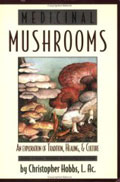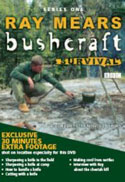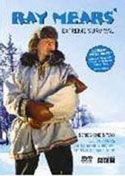|


text translation service for many worldwide languages
Many people who live in the countryside already know how to harvest nature’s bounty, wild food, wild herbs and medicinal plants that are available to anyone who takes the time and trouble to learn about wild foods that abound in their localities. Much of this knowledge has been passed down through countless generations, and many of the wild foods that made up the staple diets of peoples over the the past 250,000 years or more are still available today …
Techniques for finding, purifying, and storing water are also as ancient as the hills, and constitute the major part of what is termed the ‘bushcraft’ of many peoples. While modern camping, climbing and general back-country hiking equipment is manufactured using the same skills and knowledge of extreme environments that has similarly been passed down through the ages as the ‘traditional skills’ of many peoples …
Below are a small selection of books, videos and DVDs about basic ‘survival skills’ that have not changed much in the past 250,000 years or more, and these skills are practical, down-to-earth, tried-and-tested techniques that are still in everyday use by peoples who live closer to the land in many non-industrialised countries. They are also skills that are as relevant in North America and Northwestern Europe, as they are in the deserts, jungles and mountainous regions of every continent …
In subsequent pages there are more books, videos and DVDs about small-scale organic food production, survival skills and wilderness living, along with articles about becoming as ‘self-sufficient’ as possible in an increasingly uncertain world. Useful skills for expeditions, exploring, camping trips, as well as for those simply wanting to re-learn the ‘basic foraging tactics’ and ‘ancient survival skills’ of our ancestors – people who somehow survived the traumatic periods of uncertainty and panic which followed the civilisation collapses of the Bronze Age and earlier archaic times at the abrupt end of the last Ice Age…
Caused by the natural catastrophes and cataclysms of the distant past, some scientists now believe these Ice Age and Bronze Age collapses coincided with periodic increases in cometary activity. During such times our planet saw a corresponding increase in terrestrial bombardment episodes, which in turn gave rise to abrupt climate changes that the survivors of societies which were agriculture-dependent simply had to cope with or perish. It should be remembered that even during the last ice age human civilsation, including agricultural practices, were still very possible 30-40 degrees either side of the equator …
simply click on the book covers to order those titles directly from
Amazon.com,
or click on the EU English Edition link to order them directly from Amazon.co.uk. Some titles may not be available in both
editions. Amazon.com customers can also use the Quick-Click Buttons next to each title …
all comments are editorial and customer reviews posted on the
Amazon.com
& Amazon.co.uk
websites …
more books about ‘foraging’, ‘wild food’ and ‘living-off-the-land’ on pages:
1 |
2

EU English Edition
|
|
“Derived from the author’s “Flora Britannica”, this book takes a broad definition of herbs and includes 100 wild plants of England, Scotland and Wales. As well as describing them, the author gives an account of the role of wild herbs in social life, arts, custom and landscape. These twin volumes represent nature writing at its finest. Like the acclaimed “Flora Britannica”, from which they are drawn, these selections are the result of years of research, including the personal observations, anecdotes, and regional knowledge of people from all over Britain. It features sections on woodland flowers, primroses, and the spring flowers of lanes and fields. The Book of Wild Herbs takes a broad definition of the species and includes 100 wild plants. There are also sections on wild foods, fruits, and kitchen medicines.”
|

EU English Edition
|
|
“This little book really is a joy for all those interested in gardening and nature. In a delightful manner, the author demonstrates a lifetime’s knowledge of flowers and herbs with her detailed descriptions of each species. She includes a number of recipes for herbal drinks and country wines and also fascinating old remedies for common aches and pains. In addition to this, there are explanations of the folklore and mythology that surround many of the plants included, and the text is complemented by the author’s own superb illustrations. Arranged in alphabetical order, the book is easy to follow and a pleasure to read.”
|

EU English Edition
|
|
“This book presents for the first time and up-to-date and easy-to-read translation of a medical reference work that was used in Western Europe from the fifth century well into the renaissance. Listing 185 medicinal plants, the uses for each, and remedies that were compounded using them , the translation will fascinate medievalist, medical historians and the layman alike. New translation of the Old English Herbarium underscores its importance to the medieval world as well as its similarities to modern herbal medicine. Illustrated with drawings based on the original manuscript. Originally translated into Anglo-Saxon around the year 1000, a welcome contribution to the study of medicine in Anglo-Saxon England and will be very useful for both reference and teaching.”
|

EU English Edition
|
|
“A modern classic that can be consulted by all of those interested in getting a keener insight into the trials and tribulations, the pitfalls and rewards, and the history and future of drug therapy from nature. Probably the most definitive history of the origin and development of herbal medicine in the West. A history of grass-roots medicine, researched to the point where those of us who have dabbled in the subject are left feeling embarrassed at the wealth of source material that we left unread. Griggs is an excellent writer, and she has given a clear and sobering account of mankind’s relationship with medicinal plants from pre-history.”
|
|

EU English Edition
|
|
“This is a unique book in combining accurate and precise botany with the depth of knowledge of a renowned practitioner. There are 130 botanical illustrations, including many originals, to aid with identification. The therapeutic information is based on more than 20 years of clinical experience and provides a wealth of information on the medicinal use of herbs both internally and externally. Precise information on dosage and preparation is given. The “Medicinal Flora” is an ideal practical reference for herbalists, students, conservationists, teachers and ecologists as well as amateur botanists and anyone with a passion for plants.”
|
|

EU English Edition
|
|
“The debt owed to botany by medicine is not commonly appreciated. In the past, medicine relied almost entirely on plants, and even today, many western medicines are plant-derived. Historians have largely neglected domestic medicine in favour of ‘official medicine’. Although an impressive amount of information is available in primary sources, both within record offices and in private hands, relatively little has been published on British domestic plant medicine. The author has gathered a wealth of material from manuscripts, letters, diaries and personal interviews. This book brings together this information, using it to produce a vivid and detailed picture of the use of domestic remedies in Britain from 1700 to the present. It draws upon oral history and manuscript sources to record for posterity this neglected aspect of our heritage. Much of this has never been published before, and little modern material has been written down, and is in danger of disappearing altogether when the current generation of elderly people dies.”
|

EU English Edition
|
|
“This book provides the first comprehensive account of medicinal uses of wild plants by the country folk of Britain and Ireland. Two of Britain’s foremost ethnobotanical scholars mined nearly 300 published and unpublished sources, including information gathered by the Irish Folklore Commission in more than 1000 manuscript volumes, to chronicle the fascinating uses of more than 400 plant species. Among the many kinds of plants recorded here are a seaweed used in Scotland against ‘all maladies except the Black Death’, a mushroom stewed in milk in Norfolk to soothe cancer of the throat, a fern identified in Ireland as a ‘herb of the seven gifts’ for its reputed ability to cure diseases, and the remarkable range of benefits attributed to nettles. Such information, in addition to being interesting in and of itself, offers a starting point for phytochemical and pharmacological investigations of plants whose utility may have been overlooked. An appendix of veterinary uses is provided.”
|

EU English Edition
|
|
“Medicinal Mushrooms is a modern handbook for exploring and understanding the rich traditions of healing fungi in Eastern and Western cultures. Author Christopher Hobbs thoroughly documents and details the nutritional and health benefits of over 100 species of edible fungi. Medicinal Mushrooms is the most complete work on the cultural, health-promoting, and medicinal uses of mushrooms ever published. Mushroom toxicity, uses in traditional medicine, and appearances in the human diet are supported by clinical studies and explorations of cultural influences in this technical coverage. Over 100 species of edible fungi are documented in the most complete work on medicinal mushrooms published to date.”
|

EU English Edition
|
|
“For several years, the author has been gathering information concerning domestic plant remedies used within living memory in rural East Anglia. Informants have been for the most part elderly country people, and in almost every instance, this information has never been written down, but has been preserved orally from one generation to the next. A surprisingly large number of these native plant remedies has come to light, and an analysis of them brings out many interesting points, including the apparent accuracy of oral testimony, when compared with written information on the subject of plant remedies. Another perhaps surprising point to emerge is that new plant remedies are still being developed, some involving the use of widely grown food vegetables. The author was fortunate enough to come across manuscript material of work done by Dr Mark Taylor, a regional health officer in Norwich in the 1920’s, who carried out a similar study of East Anglian domestic medicine seventy years ago.”
|

EU English Edition Only But Available Worldwide
|
|
“From ivy wreathed buildings to the dandelions growing through the cracks between paving stones, we are surrounded by a wealth of native plants. In the past they were a hugely valued resource: magical, mystical and medical. When Charles I visited Staffordshire his chamberlain wrote to the local sheriff asking him to ensure that no fern should be burnt or cut during the king’s visit, so that the weather would be fine. Puppies were once fed daisy flowers in milk to keep them small while children wore daisy chains to protect against fairy kidnapping. Poachers scattered mullein seed on the surface of the water to drug fish. Chewing bramble leaves alleviates toothache. St John’s Wort was recommended as an antidepressant by St Columba in the sixth century. Packed with stories and memorable information, this book is the highly personal, very readable result of a lifetime spent researching folk cures and the science behind them. Outlining the history and uses of over 150 British plants, Hatfield’s Herbal offers a fascinating history of what life was once like. “
|

EU English Edition
|
|
“The wisdom and humanity of the great Culpeper are to be found in every page of this beautifully illustrated, classic work. Enjoy his caustic comments and colourful descriptions. But also read the contemporary assessment of his herbs by David Potterton, one of Britain’s leading herbal practitioners. So many of Culpeper’s views are still accepted by modern medicine that it offers some thought-provoking comparisons. Here is plant lore, traditional herbal wisdom and current herbal practice in a superbly presented, classic volume.”
|
|
|
A Selection of DVDs from our:
Survival Skills Bookstore
“Ray Mears – Wild Food”
(2007)
by
BBC/Woodlore Ltd

Region 2 DVD playable anywhere with a multi-region DVD player and compatible TV
“Ray Mears – Bushcraft
Series 1″
(2005)
by
BBC/Woodlore Ltd

All Regions DVD playable anywhere on any DVD player and compatible TV
“Ray Mears – Bushcraft
Survival”
(2005)
by
BBC/Woodlore Ltd

All Regions DVD playable anywhere on any DVD player and compatible TV
“Ray Mears
Extreme Survival
Series 1 & 2″
(2003)
by
Day Gardner Productions Ltd

Region 2 DVD playable anywhere with a multi-region DVD player and compatible TV
“Ray Mears
Extreme Survival
Series 3″
(2003)
by
Day Gardner Productions Ltd

Region 2 DVD playable anywhere with a multi-region DVD player and compatible TV
“A Hedgerow Cookbook”
by
Glennie Kindred

EU English Edition
|
more books about ‘foraging’, ‘wild food’ and ‘living-off-the-land’ on pages:
1 |
2
Ancient Survival Skills |
Practical Self Sufficiency
like to buy online? – get great extra rewards with an
Amazon.com Platinum Visa Card …
please take a look at the advice for
First-Time Visitors to Amazon.com
and reassure yourself with the
Safe Shopping Guarantee

please take a look at our Ancient Mysteries Bookshoppe for a wide selection of books
that challenge orthodox views of prehistory on every continent
Home |
Research Projects |
Skywatching |
News & New Discoveries |
MarketSpace
Marine Archæology News Archive |
Astro-Archæology News Archive
all material on this page
Copyright © 1996-2009 The Morien Institute
|